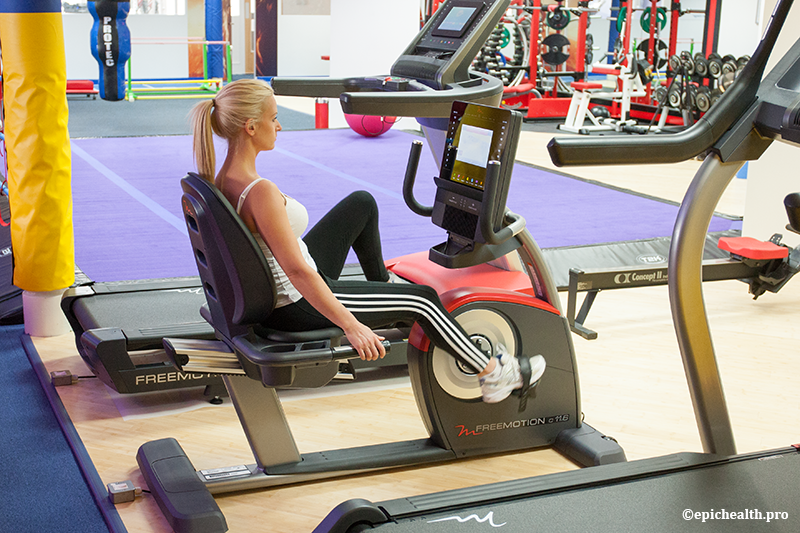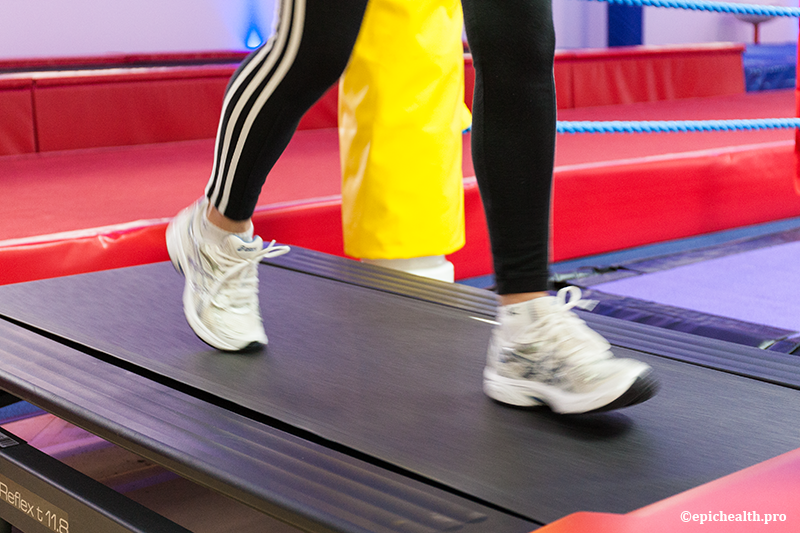The Importance of Warming Up and Cooling Down
Warming up and cooling down is important for reducing chances of injury.
Warming Up Correctly

The aim of the warm up is to place the cardiovascular, respiratory and neuromuscular systems in a state of readiness for activity. The pulse raiser warm up lasting between 3-5 minutes prepares the body for exercise; initiating the cardiovascular system, raising body temperature and increasing the flow of blood to muscles carrying vital oxygen and nutrients; also reducing risk of injury by improving the elasticity of muscles and connective tissues.
N.B. Warming up exercises should use the muscles about to be exercised. The warm up sets or activity (using a lighter load) should replicate the movement to follow, enabling synovial fluid to lubricate the joints and cartilage before greater pressure is placed on the joints and connective tissues (ligaments and tendons), reducing the risk of injury and allowing the joints and connective tissues to work at their maximum capacity.
A study by Walter and colleaugues (1989) showed that runners who never warmed up compared to those who always or sometimes performed a warm up had a significantly increased risk of injury.
By raising our body temperature gradually, during warming up provides various physiological benefits:
- Increased core temperature, causing vasodilation (veins enlarging), increasing blood supply and providing greater oxygen to tissues and working muscles.
- Increased muscle temperature improves elasticity of intramuscular connective tissue
- Metabolic activity within the muscle is stimulated
- Viscosity in muscles is reduced, allowing more efficient contractions with less resistance caused by adhesions
- Muscles can exert greater power, work more efficiently and speedily, due to muscles being ready to contract maximally
- Slow gradual warm up reduces lactic acid build up in the early part of exercise
- Increased speed at which nerve impulses travel (alter 1998)
- The heart's response to strenuous exercise is improved significantly
- Connective tissue has an enhanced ability to elongate
- Synovial fluid is secreted to lubricate joints, this reduces risk of injury to soft tissue structures
- Helps mentally prepare and practices the exercises to be performed (proprioception)
Types of Warm Up:
Passive Warm Up
Using a form of external heating; e.g. warm bath or shower, warm clothing or a pre-exercise massage. This helps increase heart rate, blood pressure and circulation; however skeletal muscle will be mainly unaffected, as blood will be diverted to the skin rather than muscles.
Active Warm Up (General)
Increases body temperature, as we engage in activities using large muscle groups; i.e. jogging, calisthenics; this method increases muscle temperature more than passive warm up.
Active Warm Up (Specific)
Specific warm ups involve practising basic movement patterns at a lower intensity and using the same muscle groups as will be used in the main activity. The greater the power required for a sport or activity the more crucial the warm up phase.
Cooling Down Correctly

The aim of the cool down is to return the body and mind to pre-exercise state.
The objectives of cooling down:
- Decreased pulse rate
- Decreased body temperature
- Stretching specific muscles in appropriate way
Gradually decreasing the work rate following exercise performing light rhythmical activity involving muscle groups worked in the exercise session.
Cooling down reduces breathing and heart rate to normal, lowers body temperature and the lightly working muscles aid venous return (de-oxygenated blood transported back to the heart) preventing dizziness and sometimes nausea. Intensive exercise causes blood vessels in the legs to expand, transporting more blood to the legs and feet. Sudden cessation of intense exercise (relative to the individual) without cooling down slows the heart rate abruptly causing blood pooling in the lower body, causing dizziness and sometimes fainting. Athlete’s heart rates slow quicker as their veins can hold more blood so their need for cooling down is greater; casual exercisers require sufficient cooling down period also to prevent dizziness. Low intensity exercise also disperses lactic acid; gradually returning the body to normal, this helps winding down and promotes mental relaxation. (Bale and James 1991; Devires 1980)
It is a myth that cooling down prevents muscle soreness. Muscle soreness is an inevitable part of the repairing and restructuring process. Cooling down should last up to five minutes or longer if your heart rate is still elevated. Once cooled down, stretch gently.
